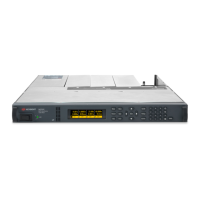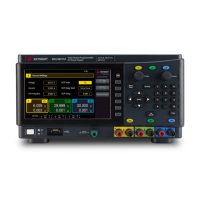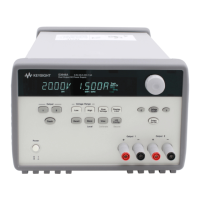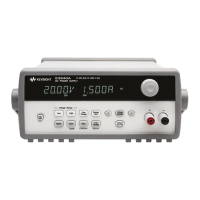Single Unit Connections
Line Cord Connection
Output Connections
Single Load Connections
Multiple Load Connections
Remote Sense Connections
Additional Load Considerations
Line Cord Connection
FIRE HAZARD Use only the power cord that was supplied with your instrument.
Using other types of power cords may cause overheating of the power cord,
resulting in fire.
SHOCK HAZARD The power cord provides a chassis ground through a third
conductor. Be certain that your power outlet is of the three-conductor type with the
correct pin connected to earth ground.
Connect the power cord that was supplied with your unit to the AC mains connector on the rear of the
unit. If the wrong power cord was shipped with your unit, contact your nearest Keysight Sales and
Support Office.
The AC input on the back of your unit is a universal AC input. It accepts nominal line voltages in the
range of 100 VAC to 240 VAC. The frequency can be 50 Hz, 60 Hz, or 400 Hz.
The detachable power cord may be used as an emergency disconnecting device.
Removing the power cord will disconnect AC input power to the unit. Ensure that the
power cord is accessible.
Operation With AC Mains Circuits Rated Below 180 VAC
AC mains circuits rated at 100-120 VAC cannot supply enough current to power either the 1 kW or the
2 kW models when operated at their full rated output power.When connected to a 100-120 VAC
mains, the instrument turns off the output and sets either the CP+ or PF status bit when the output
power exceeds 700W.
400 Hz Operation
Redundant Ground Requirement
At 400 Hz AC input operation, the leakage current of the unit exceeds 3.5 mA. This requires the
installation of a permanent, redundant ground from the instrument chassis to earth ground. This
ensures that ground will always be connected and that any leakage current will be diverted to ground.
Refer to Redundant Ground for installation instructions.
2 Installing the Instrument
68 Keysight N6900/N7900 Series Operating and Service Guide
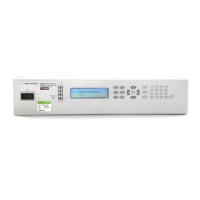
